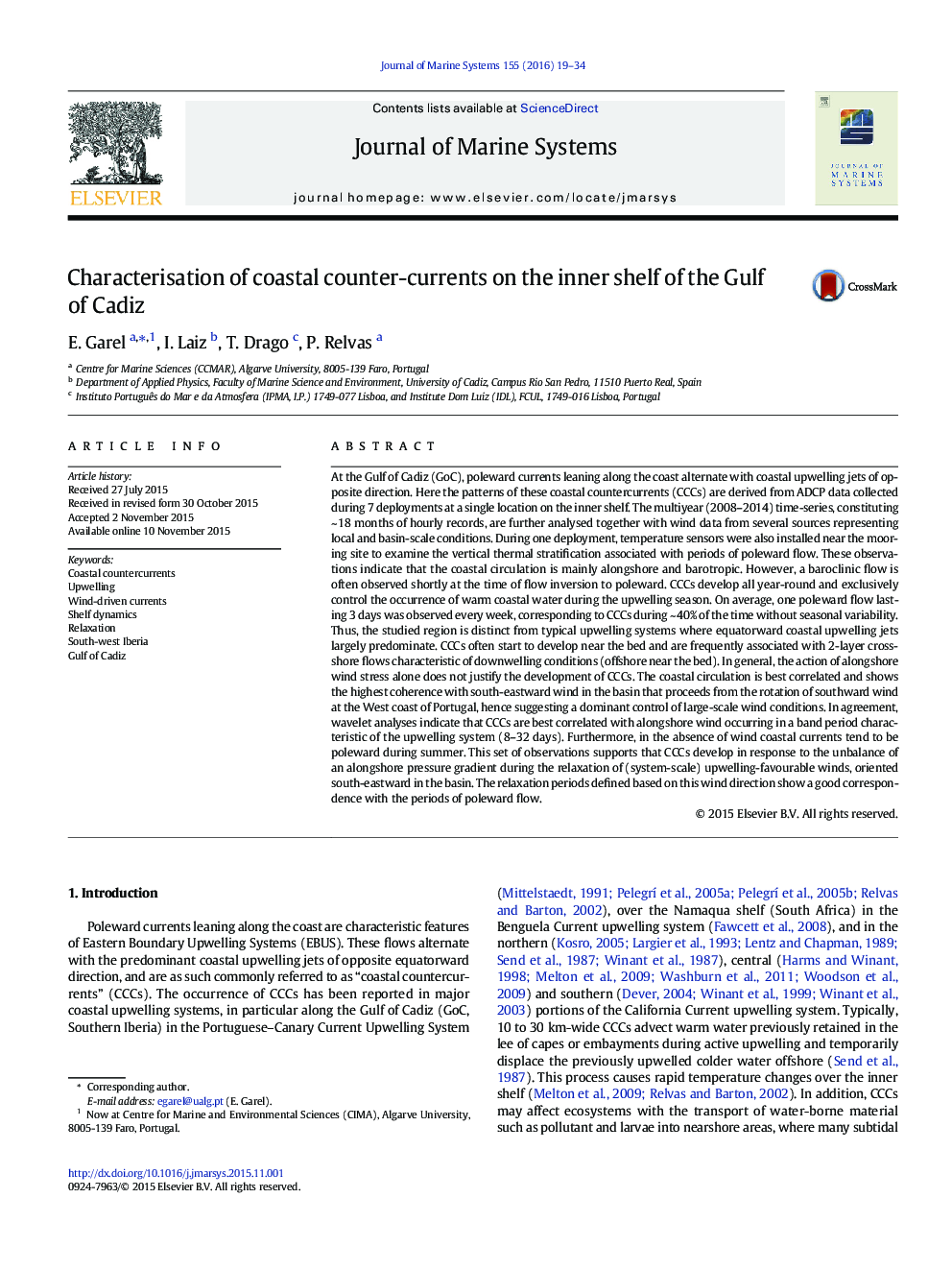| Article ID | Journal | Published Year | Pages | File Type |
|---|---|---|---|---|
| 4547939 | Journal of Marine Systems | 2016 | 16 Pages |
•Coastal counter currents (CCCs) in the Gulf of Cadiz are characterised.•CCCs occur frequently all-year round without seasonality.•CCC is barotropic (except at inversion), often with baroclinic cross-shore flow.•Alongshore wind stress alone fails to justify the development of CCCs.•CCCs relate to large-scale upwelling-favourable wind blowing south-eastward.
At the Gulf of Cadiz (GoC), poleward currents leaning along the coast alternate with coastal upwelling jets of opposite direction. Here the patterns of these coastal countercurrents (CCCs) are derived from ADCP data collected during 7 deployments at a single location on the inner shelf. The multiyear (2008–2014) time-series, constituting ~ 18 months of hourly records, are further analysed together with wind data from several sources representing local and basin-scale conditions. During one deployment, temperature sensors were also installed near the mooring site to examine the vertical thermal stratification associated with periods of poleward flow. These observations indicate that the coastal circulation is mainly alongshore and barotropic. However, a baroclinic flow is often observed shortly at the time of flow inversion to poleward. CCCs develop all year-round and exclusively control the occurrence of warm coastal water during the upwelling season. On average, one poleward flow lasting 3 days was observed every week, corresponding to CCCs during ~ 40% of the time without seasonal variability. Thus, the studied region is distinct from typical upwelling systems where equatorward coastal upwelling jets largely predominate. CCCs often start to develop near the bed and are frequently associated with 2-layer cross-shore flows characteristic of downwelling conditions (offshore near the bed). In general, the action of alongshore wind stress alone does not justify the development of CCCs. The coastal circulation is best correlated and shows the highest coherence with south-eastward wind in the basin that proceeds from the rotation of southward wind at the West coast of Portugal, hence suggesting a dominant control of large-scale wind conditions. In agreement, wavelet analyses indicate that CCCs are best correlated with alongshore wind occurring in a band period characteristic of the upwelling system (8–32 days). Furthermore, in the absence of wind coastal currents tend to be poleward during summer. This set of observations supports that CCCs develop in response to the unbalance of an alongshore pressure gradient during the relaxation of (system-scale) upwelling-favourable winds, oriented south-eastward in the basin. The relaxation periods defined based on this wind direction show a good correspondence with the periods of poleward flow.
